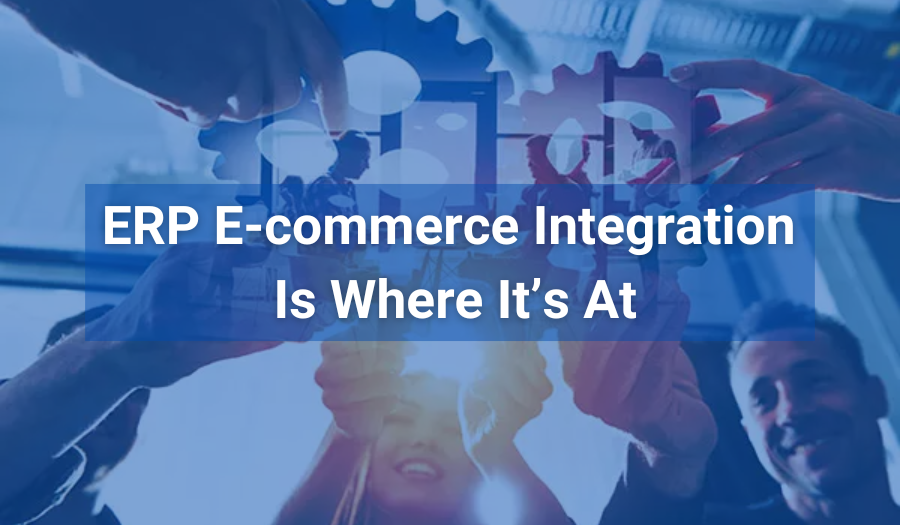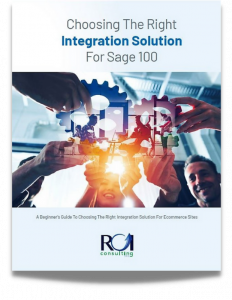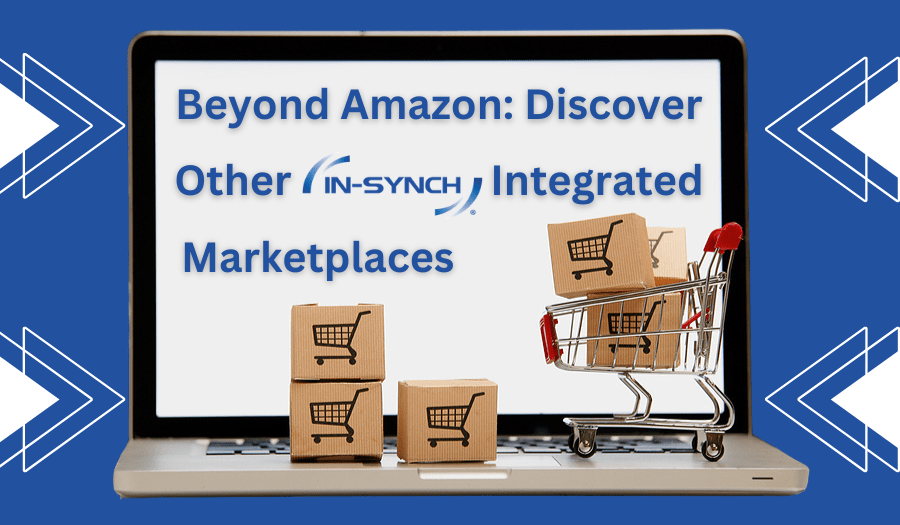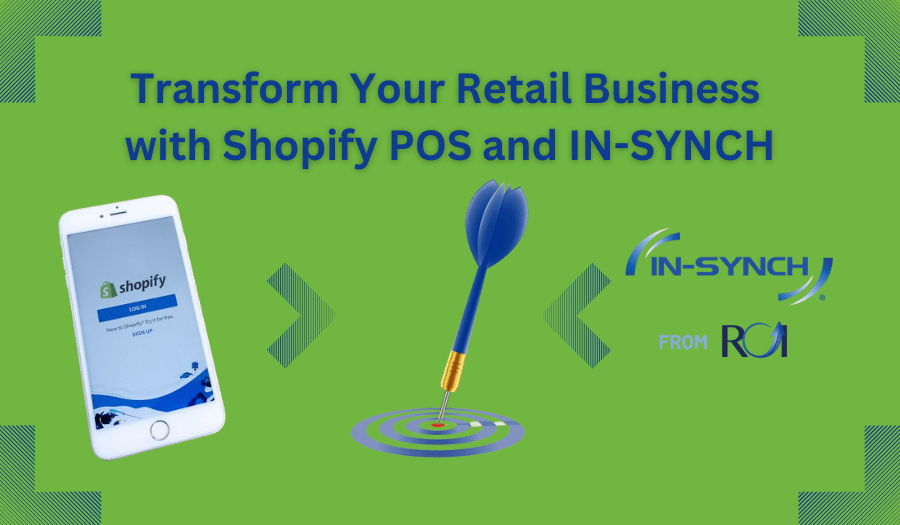By Ruth Richter • October 03, 2022

Without the integration to finance, an e-commerce site is basically an online catalog display and receptacle for customer and order data. ERP e-commerce integration connects the e-commerce site to the financial accounting process, such as to Sage 100 ERP. Integration allows the source of truth for inventory, order status, and customer and other financial data to be “in sync” with the e-commerce platform, making for a powerful, automated system.
At ROI, we’ve developed IN-SYNCH®, a Sage 100-installed application that provides real-time data synchronization with any third-party system. It is a flexible tool that can be used for multiple types of integration needs—from the basic to complex, customized systems.
Set It and Forget It
For a digital merchant, the integration project will tie together the two systems—the e-commerce platform and ERP—where transactions are moving through the process, running faster and more efficiently.
The following is how our proven integration process (which is actually quite complex) flows:
When the e-commerce platform or shopping cart completes an order, the ROI connector will bring the transaction data to a hosted, staging database. IN-SYNCH monitors for new, incoming data and immediately sees the new order and automatically enters the Sage sales order (either to the existing customer’s account or it creates a new customer) as if someone entered it manually. The order is now ready to be processed by the business’ staff, just like information they would enter directly into the Sage system.
Since the e-commerce-generated data is now housed in the ERP, it is subject to any workflows previously set up, such as alerts or prioritization to be picked, packed, and shipped in record time. Once the order is prepared for shipment and the tracking number is entered into Sage 100, the update in Sage 100 is automatically noticed by IN-SYNCH. Automatically, IN-SYNCH delivers the tracking data to the staging database, where the connector will make it available to the e-commerce system. If the e-commerce system is configured to send customers’ shipping information, the platform will complete its own workflows, such as automatically emailing customers with an order confirmation or shipping update.
E-commerce businesses no longer must waste time on data entry, risk of errors, and unmanageable volume. Shoppers and customers have an easier time placing online orders and all the data is being synchronized, updated, and managed automatically. That’s “where it’s at”!
Learn more about Sage 100 Integration.
There Is a Business Case
There are many benefits with integrating Sage 100 with the e-commerce system. Sage 100 offers a powerful platform that can help team members analyze, share, and report on financial and other data within the company. Such information can be used for planning, forecasting, and managing all aspects of the e-commerce business. When Sage 100 is integrated with an e-commerce system, business managers gain an even deeper insight into operations.
One of the most significant benefits we hear from our customers is that it allows their customers to self-manage their accounts. Shoppers can easily, without contacting the merchant, check on their accounts, order statuses, inventory, history, and more. Not only is this great for the customers, but it’s also great for the online business which can focus on real customer service issues rather than helping with simple customer inquiries.
Sage 100 integrated with an e-commerce system means data flows seamlessly between the e-commerce system and the ERP without manual re-typing of information. It eliminates one point where mistakes can enter the ERP which reduces errors and shipping mistakes. Rekeying orders into the accounting system is just one area where maintaining separate systems takes up additional staff time. By integrating Sage 100 with an e-commerce system, time is saved throughout the organization. This time can now be better spent on other tasks such as customer service, marketing, and business planning.
 Your Next Roadmap?
Your Next Roadmap?
We suggest your team plans your next roadmap to accomplish automation through integration with ROI. ROI has been performing Sage e-commerce integrations using IN-SYNCH for 25 years. We have a solution for simple integration to complex projects requiring B2B touchpoints and multiple URLs and systems. We have the experience and knowledge to seamlessly integrate Sage 100 with most e-commerce platforms so that you can transform your operations.
The next step is to contact us today! In the meantime, be sure to check out our whitepaper, “Choosing the Right Integration Solution for Sage 100,” for more information.





